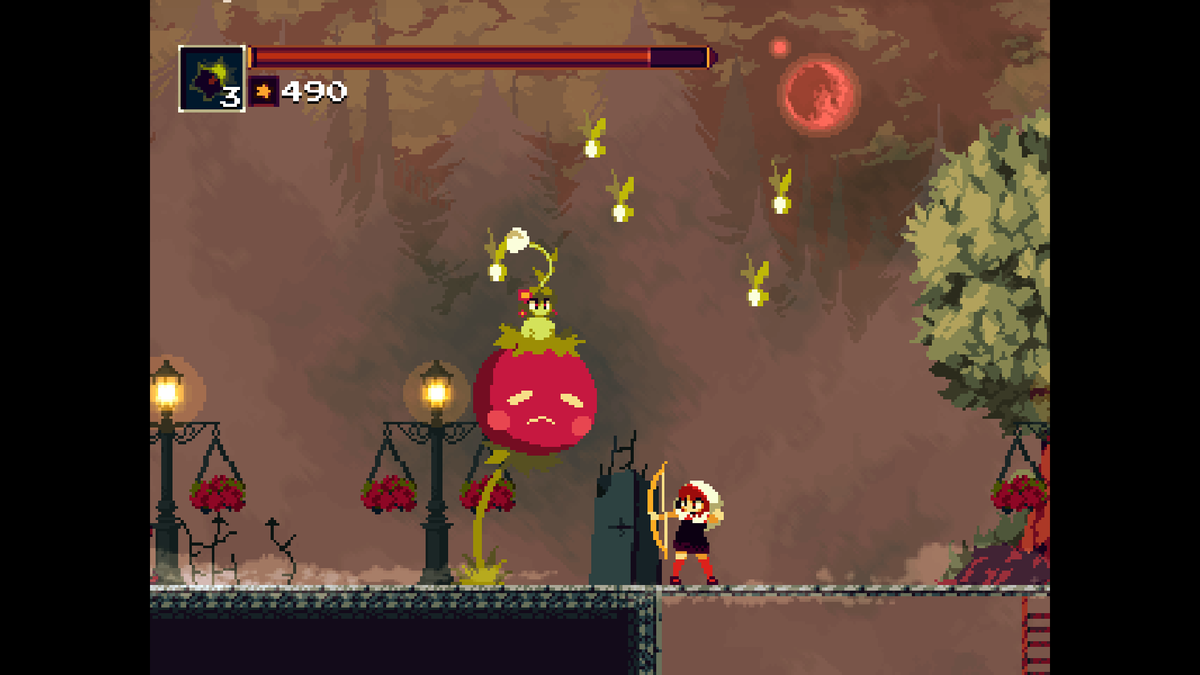There is much to appreciate in Momodora, and even novice players of the genre should find something to enjoy. Reverie Under the Moonlight is the fourth installment in the Momodora series but serves as a prequel to the first game. The first two games are available as freeware, the third was sold on Steam, and the fourth has been ported to Xbox One and PlayStation 4 (PS4). It costs $9.99. This was the first Momodora game I played, and I enjoyed it immensely.
Priestess, warrior and explorer
In Momodora: Reverie Under the Moonlight, you play as the warrior priestess Kaho, who sets off from her village of Lun to the City to find out why the lands are becoming plagued with monsters and spirits. A maple leaf is your melee weapon, and a bow with a charge attack covers your ranged attacks. You also start with a reasonably-generous health bar, which is necessary because Kaho is a combination of combat hardened and incredibly delicate.
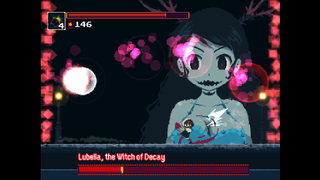
As you pass from area to area, you unlock parts of your map, which is found in your menu. There you can see the open pathways coming from the area you are in, as well as the areas you've been to previously. In order to reach them, you may have to platform and double jump your way around the level to reach the exits, all the while killing or evading monsters in your way. With no set direction or path, the process of elimination and your map become bedfellows as you exhaust every direction to a dead end in order to progress the story. This aspect of having to use the map so often reminds me a little of the cartography side of the game Etrian Odyssey, developing the map and checking it every step of the way. It is very easy to get lost if you're bumbling ahead without paying attention.
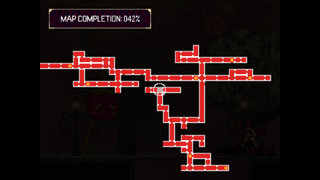
The story tends to take a bit of a backseat, letting the beautiful and twisted environments do the talking. You may come across a character once in a while who will fill you in on the story of the area you're in, what happened there and who was responsible. Interactions with these characters are fleeting, but they break up the exploration enough so it doesn't feel like fighting is the only thing you're doing. These fleeting moments come in handy, because they explain why otherwise random characters are helping you battle some bosses. The dialogue box and its sound effects are reminiscent of so many games from the years of the NES onwards, and the pixel-art style really works. However, thanks to the wonder that is HD, you get much richer and detailed scenes in Momodora than you did back then, and thank goodness because the developer, Bombservice, did an amazing job creating rich and vivid scenes.
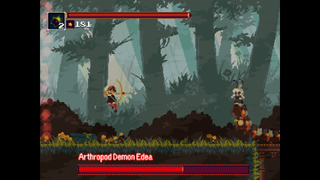
Pray for health
As you progress deeper into the story, you discover that the queen is responsible for the curse and unfortunately, regicide falls to your hands. It's for the good of the land, after all. In order to progress to the queen and maple-leaf her to death, you'll have to find parts of a crest which will also enhance your powers, such as another bow-charge tier, an evade dash, and extending your health bar. These come in handy as monsters get more powerful. From fighting little tomato-men with clubs to witches shooting giant fireballs at you, you'll be relying on the use of well-timed invincibility frames and recognizing telegraphed attacks to survive. Most monsters have a "tell" before they attack, so you can prepare to evade it or work it into your plan of attack. Much of the time, rolling is perfectly adequate to slip past a group you don't want to pause to kill.
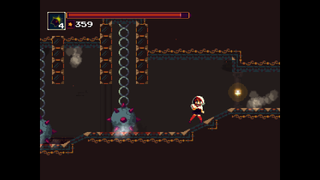
If you happen to take some damage, healing with petals does the job. Flowers can be found individually across the game, and each one you find provides you with one heal. Since you take no fall damage, the only monster you really need to worry about is the boss, as Kaho can take a relatively large amount of damage before it becomes a problem. This is good for another reason. You can save the game through hitting hanging bells, and in doing so, it refills your health, spells, and petals. The only problem is they're quite far away from each other. But that's certainly not a criticism. Having the save bells far apart requires that you to play more tactfully, only get into fights if you think you can win without taking too much damage, and have the petals to be able to heal enough before you come across the next.
Some might liken this mechanic to Dark Souls, and I would agree. However, Momodora goes a step further. In Dark Souls, when you clear an area, the monsters don't respawn until you sit at a bonfire. In Momodora, if you clear a room and re-enter it, the monsters are back. This allows for "munny" farming, however. Munny is used for buying buffs and accessories that will assist you in some way. There is a little panda-looking merchant you can find, who sells you a couple of items, and they're usually well into the mid-hundreds of munny.
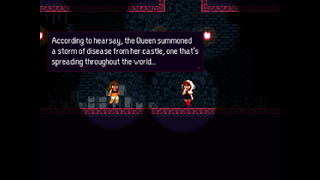
Momodora is also like Dark Souls ... if you don't mind dying a lot. If you can take dying a lot between saves in your stride, you'll get on fine. However, this isn't a new mechanic or one even cemented by Dark Souls, especially since there are some famously challenging retro action platformers. For example, Castlevania, Battletoads, Super Metroid and Mega-Man. However, fans of all those games will almost definitely find something to like about Momodora. If it's not difficult enough, you can even make it harder.
Momodora: Reverie Under the Moonlight — Summary
The $10 game is a relatively short jaunt with an enjoyable story, and it is challenging, with the right blend of atmosphere and solid combat.
Pros:
- A good entry-level Metroid-vania for newcomers.
- Beautiful scenery.
- Responsive combat mechanics.
Cons:
- No way to block attacks. You must evade or die!
Review disclaimer: This review was performed on Xbox One with a code provided by the developer.
Lauren Relph is a games writer, focusing on Xbox. She doesn't like piña coladas but loves getting caught in the rain. Follow her on Twitter!
